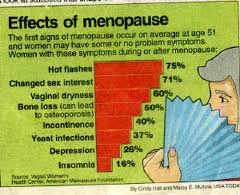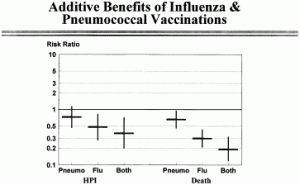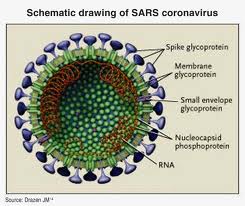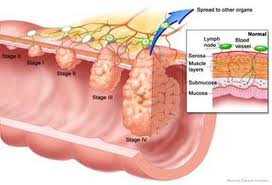Bipolar disorder used to be called “manic-depressive illness” in the past, now it is termed “bipolar disorder”. It is a multifaceted mental illness where subtle changes in the mix of brain hormones can lead to periods when the patient is euphoric, manic or even psychotic (manic episode), but at other times it seems that someone “pulled the plug”, so to speak, and the patient is depressed, lethargic and perhaps even suicidal.
To complicate matters even further,and this was the subject of a recent seminar at the Child and Health Resource Institute in London/Ontario, symptoms in children and teens are often completely different from symptoms in adults. This can be very misleading to the healthcare workers and the immediate family members. It can also delay the diagnosis and appropriate treatment of bipolar disorder. The Medical Post in its April 1, 2003 edition (page 54) published a review of this topic, based on a presentation by Dr. Margaret Steele at this seminar in London/Ont. Dr. Steele is a child psychiatrist of the University of Western Ontario.
Dr. Steele explained that bipolar disorder is relatively rare in children and adolescents. About 0.5% or less of children in pre-puberty and about 1% of adolescents are affected. But these children/adolescents usually have a family history of either bipolar disorder or depression. 20% of adults with bipolar disease experienced their first episodes of the disease during the teen years.
Below is a summary of her findings with regard to depressive symptoms in children/teens when compared to adults in tabular form.
| Comparison Of Symptoms Of Depression In Bipolar Disorder Patients Depending On Age | |
| Adult Symptoms: |
Symptom Presentation In Children/Teens: |
| depressed mood | irritability is more common; normally easy-going, but suddenly being oppositional and grouchy |
| anhedonia (difficulty to think positive and enjoy living) | “I am bored” may be the only comment, retreating into a shell |
| sleep disturbance, mostly insomnia (problems sleeping) | they may have the opposite, namely hypersomnia (sleeping too much and too long); this may cause problems when they sleep in during the week or they fall asleep in school |
| appetite disturbance (usually associated with weight loss) | young children fail to grow and gain weight; adolescence may crave junk foods (sugar and starch) and overeat |
| lethargy | in children a decrease in concentration may only become evident as a decrease in school performance (slipping marks) |
| psychomotor agitation or retardation | these symptoms are similar in both adults and children, may be evident as pacing, fighting (agitation) and as “laziness”, moving slowly (retardation) |
| Suicidal thoughts or behavior |
similar in adults and children, but could be more concealed at a younger age (see below) |
| hopelessness | when asked “what do you see in the future?” an answer like “I see nothing at all, I have no goals” could indicate hidden suicidal thoughts |
| masked depressive symptoms | younger children may have temper tantrums, which would be out of character from their normal behavior; adolescents may “act out” |
| somatic complaints | adolescents present with headaches and other physical symptoms (e.g. abdominal pain etc.) meaning a “screen of mood” should be done |
The other part of the equation of bipolar disorder is mania. Different names are used for this hyperactive state of the mind depending on how severe it is: ‘hypomania’ for the lower end, ‘mania’ for an abnormally elevated and expansive mood lasting for at least 1 week. The most severe form of mania is a ‘manic psychosis’ where the person is “completely out of it” and needs to be hospitalized. Again there are some differences of how a manic episode is expressed in children/teens when compared to adults. Dr. Steele covered this in the seminar mentioned above as well and I have summarized the findings in tabular form again as follows.
Child psychiatrists are most familiar with assessing whether a child or adolescent has bipolar disorder. Apart from symptoms being quite variable as mentioned above, there are also lower-key versions of bipolar disorder.
A milder, scaled down version of a manic episode is called ‘hypomania’ as explained above and when expressed in bipolar disease this can lead to ‘bipolar II disorder’. In 60% of adolescents with bipolar disease a ‘mixed bipolar episode’ can be diagnosed. Typically, in these cases the teenager would have depressive symptoms in the morning (feeling low energy, feeling terrible etc.), but later in the day after school would get revved up having problems winding down at night. Often such behavior is very stressful for the parents, particularly as bipolar disorder is running in families and one of the parents may have established bipolar disorder that is being treated.
The reason for including this overview here is that many parents may recognize some symptoms in their offspring that warrant a closer look by a child psychiatrist. By diagnosing this condition early and treating it, these children and teens can have a normal life and prevent a lot of needless suffering and danger.
Click for links about bipolar disorder , depression and watch for suicide.
| Manic symptoms in bipolar disorder patients depending on age | |
| Manic symptoms in adults: | Manic symptoms in children/teens: |
| inflated self-esteem | elevated, irritable mood; it is beyond being giddy and silly, which many teens normally display; children may say that they are ‘Spiderman’, it can be difficult to separate from normal play, but on further questioning manic children have racing thoughts and hear voices (delusions), which normal children do not have |
| racing thoughts, often detected in conversation as ‘flight of ideas’ | racing thoughts express themselves more as ‘distractibility’; a child might pick up a toy, drop it after a short time and suddely play with something else |
| pressured speech | increased chattiness |
| excessive pursuit of activities that are potentially harmful (speeding in car, excessive drinking or drugs, risk taking in the stock market, etc.) | risk taking expressed differently: kids might steal despite never having done this before; manic children may exhibit sexual behavior such as flirtatious behavior, etc. |
| medical conditions may mimic symptoms of mania (e.g. diabetes out of control) | side-effect of oral corticosteroid therapy for asthma can lead to a psychosis and mimic a manic episode |
Child psychiatrists are most familiar with assessing whether a child or adolescent has bipolar disorder. Apart from symptoms being quite variable as mentioned above, there are also lower-key versions of bipolar disorder.
A milder, scaled down version of a manic episode is called ‘hypomania’ as explained above and when expressed in bipolar disease this can lead to ‘bipolar II disorder’. In 60% of adolescents with bipolar disease a ‘mixed bipolar episode’ can be diagnosed. Typically, in these cases the teenager would have depressive symptoms in the morning (feeling low energy, feeling terrible etc.), but later in the day after school would get revved up having problems winding down at night. Often such behavior is very stressful for the parents, particularly as bipolar disorder is running in families and one of the parents may have established bipolar disorder that is being treated.
The reason for including this overview here is that many parents may recognize some symptoms in their offspring that warrant a closer look by a child psychiatrist. By diagnosing this condition early and treating it, these children and teens can have a normal life and prevent a lot of needless suffering and danger.
Click for links about bipolar disorder , depression and suicide prevention.
Last edited October 25, 2014





















